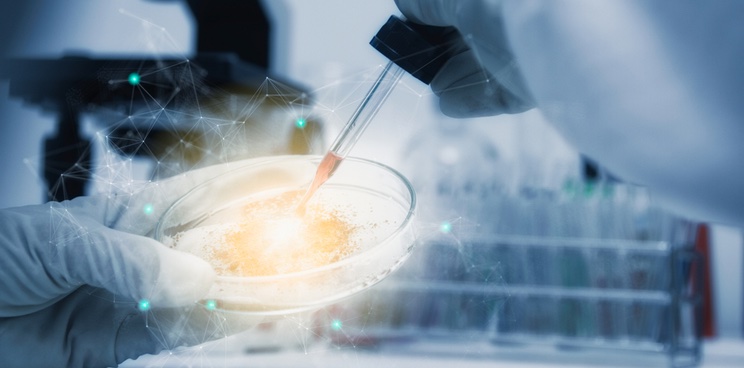This week’s €64M Series B fundraise from the French firm TreeFrog Therapeutics is the latest in a thriving movement to make the manufacture of gene and cell therapies easier and cheaper.
Cell and gene therapies offer huge potential to treat a wide range of diseases including cancer, neurological, and genetic diseases. They have even shown promise to treat the symptoms of Covid-19.
The amount of academic and early-stage biotech research in this area has skyrocketed over the last few years. According to data from the Alliance for Regenerative Medicine in January this year, there are currently 1,220 ongoing clinical trials in this space, 152 of which are at phase III. Despite the global pandemic, investment in this area is also at a record high around the world, with the equivalent of €15.7B invested in 2020, a figure double that of 2019.
But research alone cannot get these complex treatments to patients. “The sharp discrepancy between the high number of products in early-stage development and the still very small number that have made it onto the market, as well as their cost, speaks to the impact and importance of cost-effective and scalable manufacturing,” said Ryan Cawood, CSO of the UK cell and gene therapy manufacturing firm Oxgene.
TreeFrog Therapeutics’ €64M Series B round was the latest effort to meet this challenge. With international expansion in its sights, the firm aims to work with big biopharma players to produce cells more cheaply and at a better quality than current cell therapy manufacturing techniques. TreeFrog is also developing its own cell therapy candidates, starting with a Parkinson’s disease therapy due to enter phase I in 2024.
“Solving the manufacturing issue in cell therapy means being capable of serving not just a few thousands of patients per year, but millions of them, with reproducible efficacy and consistent safety,” said TreeFrog’s CEO, Frederic Desdouits.
“I don’t believe that current cell culture technologies will ever meet that need. In fact, I believe that with [our technology], we are the only ones playing in this new category.”
TreeFrog’s round joins the steady stream of biotech activity focused on advancing the manufacture of cell and gene therapies. Earlier this month, UCB recruited the German firm Cevec to manufacture viral vectors for gene therapies. In July, the heavyweight Danaher Corporation revealed plans to pump €1.3B ($1.5B) into the expansion of its cell manufacturing facilities. And earlier in the year, we saw WuXi AppTec take over Oxgene, PerkinElmer acquire Sirion Biotech, and a range of collaborations including between Vigeneron and Daiichi Sankyo.
The early difficulties with manufacturing the approved Covid-19 mRNA vaccines in high enough quantities has really highlighted the importance of having a solid manufacturing strategy in place. This lesson applies equally to companies trying to take cell and gene therapies to market.
Stuck in the first generation
Despite the huge increase in development of cell and gene therapies over the past couple of years, manufacturing technology for these therapies is largely still at the first-generation stage. This can make scaling up a challenge.
“Often cell and gene therapy manufacturing processes are highly manual – stemming from the early academic or process development stage and, without adequate technology solutions available currently, these processes often remain this way through clinical trials and then into commercial manufacturing,” said Jason Foster, CEO of Ori Biotech, a London- and New Jersey-based company focusing on cell and gene therapy manufacturing.
“These first-generation processes cause manufacturing to be expensive, highly variable and low-throughput, which reduces the ability of patients to access these potentially life-saving therapies.”
Another problem common to all biological therapeutics is that any product sourced from a live cell or a component of one is subject to a lot more variation than a simpler pharmaceutical product.
“Most gene therapies are built on viruses found in nature. They have not evolved for very high productivity in a large-scale, animal component-free bioreactor,” said Cawood.
“The more complicated the biologic becomes, the more parts of it require optimization, and the more analytics you require.”
According to TreeFrog Therapeutics’ co-founder, Kevin Alessandri, there is also a lot of waste in cell therapy manufacturing.
“Yields are impaired by high cell death at every passage, and genetic alterations inevitably arise,” said Alessandri. “When it comes to producing commercial batches to treat thousands of patients, scaling out 2D cell culture processes is far too expensive and poses batch-to-batch reproducibility issues.”
While many in the industry are now turning to bioreactors to produce cells on a bigger scale, this is also not without problems. “Impeller-induced shear stress is damaging the cells, thus negatively impacting cell viability and triggering undesired genetic mutations,” explained Alessandri.
Taking manufacturing up a gear
TreeFrog Therapeutics’ way of overcoming common challenges in manufacturing cell therapy is to encapsulate the cells in a protective shell that reduces waste in the manufacturing process. The company launched an industrial demonstration plant in June last year, followed by two co-development deals with undisclosed big pharma partners.
“Encapsulated stem cells spontaneously self-organize in an in vivo-like 3D conformation promoting fast and homogeneous growth, as well as genomic stability,” said Alessandri. “The resulting 3D stem cell colony can then be differentiated in the capsule into functional microtissues ready for transplantation.”
“With our technology, which is based on high-throughput microfluidics capable of generating over 1,000 capsules per second, it becomes possible to expand and differentiate stem cells at a large scale, in industrial bioreactors, with best-in-class cell quality and reduced operating costs.”
Meanwhile, Ori Biotech deploys robotics to minimize the number of manual steps needed to produce a given cell or gene therapy. This speeds up the process as well as making it more accurate. Another advantage of the technology is that it can tailor the production capacity according to demand.
“This is impossible to do in most current processes, which involve manual tube welding and transfers from flask to bag to bigger bag to bioreactor,” said Foster. Ori’s technology could take years off the production timeline and cut costs by as much as 80%.

London-based Synthace is one of several companies trying to improve advanced therapeutic manufacturing by developing software and computer systems to optimize the process, rather than industrial machinery.
Peter Crane, who was Synthace’s Corporate Strategy Manager until earlier this year, said that in-depth data analysis and planning before starting the manufacturing process can make a big difference to outcomes, and that connected software can help make this task easier.
“The best way to remove some of the risk associated with biomanufacturing of these products is to solve as many problems as possible before manufacturing.”
In addition to making the process quicker, cheaper, and more accurate, computing tools can also help with quality control and tracking. “In cell therapy manufacturing, especially autologous products, line of sight around electronic batch records, as well as the vein-to-vein supply chain, is incredibly important,” emphasized Crane.
Oxgene has a focus on scaling up viral vector production with less contamination and a 40-fold improvement in yield compared to current methods.
“Innovation in new manufacturing technologies just hasn’t kept pace with the level of discovery around genetic disease and potential avenues open to treat them, or even development of the viral vectors themselves,” said Cawood. “This is definitely changing though.”
Enter the second generation of manufacturing
Huge advances in gene and cell therapies over the last few years, such as the approval of the eye gene therapy Luxturna and the first CAR-T cell therapies, mean the demand for new manufacturing technologies has also increased exponentially.
“A lot of very promising programs are now in the pipeline, and patients are waiting for their approval,” said Alessandri. “Industry urgently needs robust manufacturing technology, capable of serving millions of patients.”
European biotechs are busy developing second-generation technologies to allow easier and cheaper scale up, producing higher quality products with less waste. They could start to phase out first-generation methods very soon.
The realm of cell manufacturing in industrial and food biotech is also likely to see big breakthroughs in the coming years. In January this year, for instance, the nutrition and health giant Royal DSM set up a lab in the Netherlands dedicated to applying artificial intelligence (AI) to the challenge of growing microbial strains at a commercial scale.
Rapid improvements in advanced computing options such as AI and machine learning technology, as well as robotics, are already having an effect on the industry, but this will only get bigger as time goes on.
This article was originally published on January 28, 2021, and has since been updated by Jon Smith. Cover image from Elena Resko. Body text image from Shutterstock





